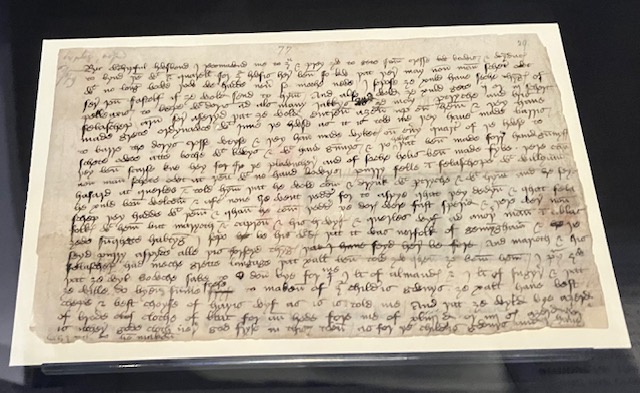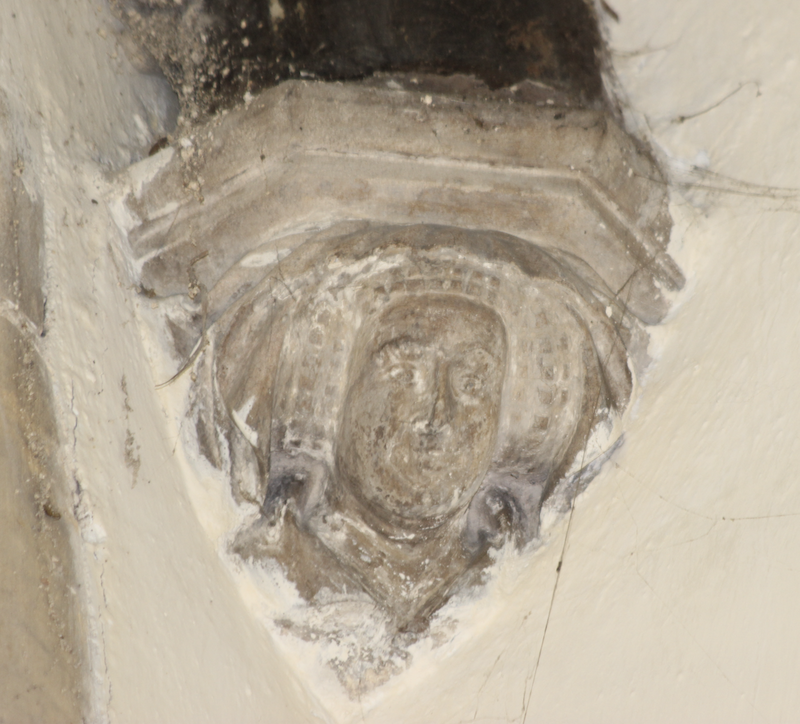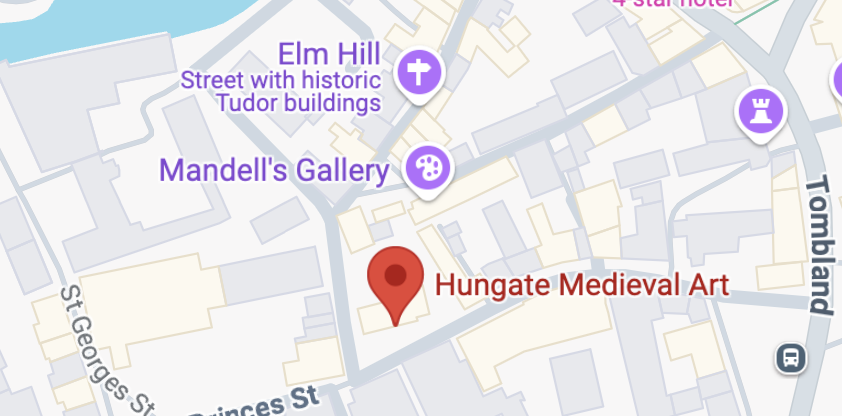by Diane Watt

Margaret Paston writing to her husband from Gresham requesting weapons and armour (London, British Library, Add MS 34888, f.29) on display at the British Library’s Medieval Women: In Their Own Words Exhibition (c) British Library
Margaret Paston, a fifteenth century Norfolk gentlewoman, was responsible for the largest collection of personal letters from medieval England. Most of her letters were written to her lawyer husband, during his many absences for work. She also wrote to her sons, the family chaplain, and her female friends, amongst others.
Margaret’s letters provide fascinating insights into the everyday life of a wealthy gentry woman in a time of mayhem and pestilence. Her letters begin a year after her marriage, and describe her excitement at her first pregnancies, and her concerns about her husband’s health. Unfortunately, the family’s peace was soon further disrupted by challenges to their ownership of the manor of Gresham, which had been given to them by John’s father on their marriage.
Despite having young children in her care, Margaret found herself leading the defence of Gresham, and in one of her most famous letters, she asks her husband to obtain crossbows and armour. Matters came to a head when an angry neighbourhood militia stormed the moated manor house, undermining the walls and battering down the doors. Margaret was removed by force and fled to the home of a family ally in a nearby village. The manor house was destroyed and never rebuilt.
Following this traumatic event, the family relocated to Norwich, eventually settling in the Elm Hill area. A building in Elm Hill, known as ‘The Paston House’ (now the Strangers Club) bears a blue plaque stating that it was built on the site of the Paston residence, the original house having burnt down in the early sixteenth century. Whether this really was the location is uncertain. Other buildings in the locality can be tied more firmly to Margaret and John as they benefitted from generous financial gifts to pay for restoration work. One is the former Dominican friary, now St Andrew’s Hall. A magnificent door still bears the arms of Paston and Mautby (Margaret’s family name).

Roof boss, St Peter Hungate (c) Heike Bauer
The most important Norwich site linked to Margaret is the former Church of St Peter Hungate, also on Elm Hill, now home to the charity, Hungate Medieval Art. This was Margaret and John’s parish church. Medieval roof bosses at corners of the interior walls, depicting the heads of a man and a woman in fashionable headdresses, are said to be donor portraits of the couple. After Margaret’s husband died unexpectedly in London, St Peter Hungate was a significant overnight resting spot for his body, en route to his entombment. Several years later, Margaret’s favourite son Walter fell seriously ill while studying in Oxford. He was brought back to Elm Hill to his mother’s care, but died soon after, and was buried before the altar of St Peter Hungate.
Margaret eventually retired to the village of Mautby, where she lived out the remaining years of her widowhood. Here letters cease a few years before her death. She was buried in the church and a plaque in the grounds commemorates her life.

Further reading:
1. Translations of the Paston Letters
Davis, Norman, ed. The Paston Letters: A Selection in Modern Spelling (Oxford: Oxford University Press, 1983).
Watt, Diane, trans. and ed., The Paston Women: Selected Letters (Cambridge, D.S. Brewer, 2004).
2. Secondary Sources
Castor, Helen, Blood and Roses: The Paston Family in the Fifteenth Century (London: Faber and Faber, 2004).
Gies, Frances, and Josephine Gies, A Medieval Family: The Pastons of Fifteenth-Century England (New York: HarperCollins, 1998).
Rosenthal, Joel T., Margaret Paston’s Piety (Basingstoke: Palgrave, 2010).
Watt, Diane, God’s Own Gentlewoman: The Life of Margaret Paston (London: Icon, 2024).
